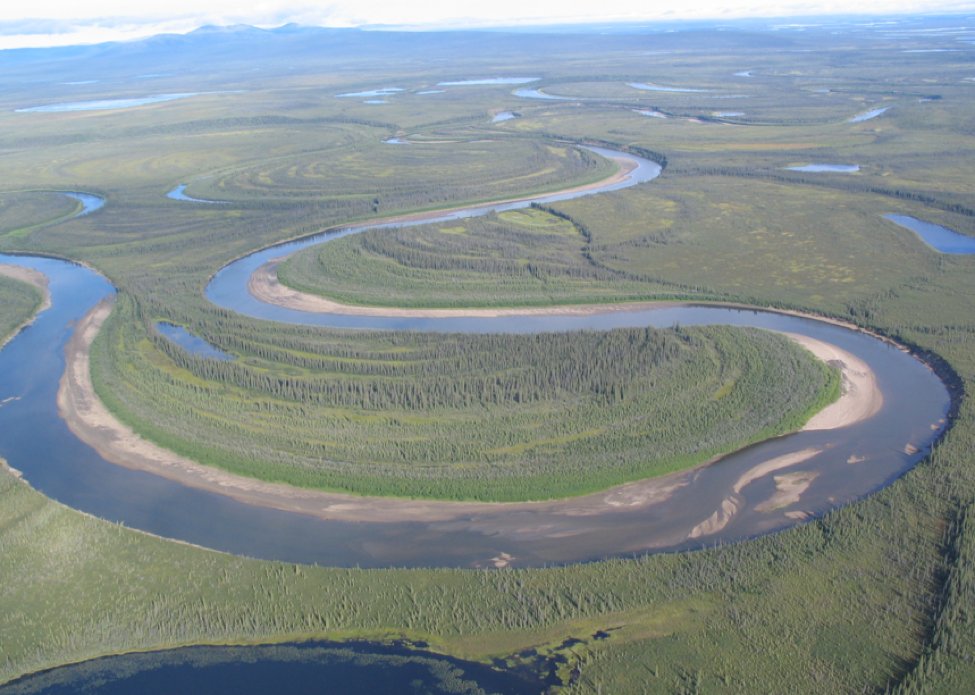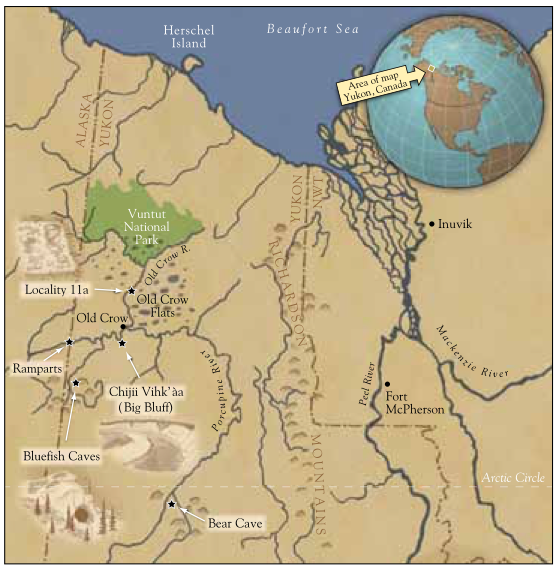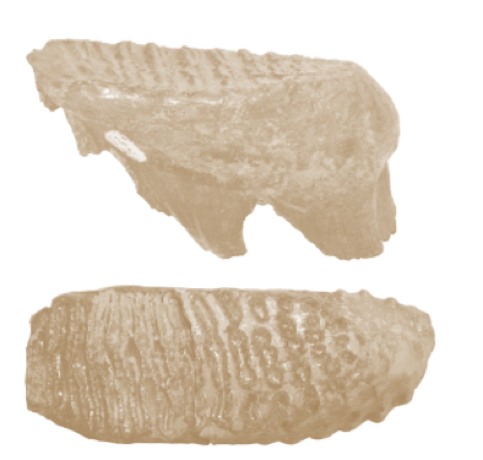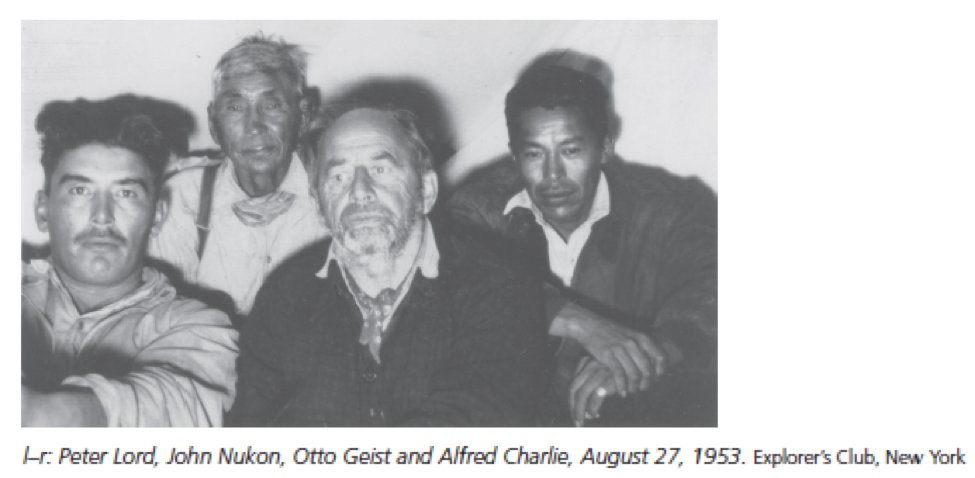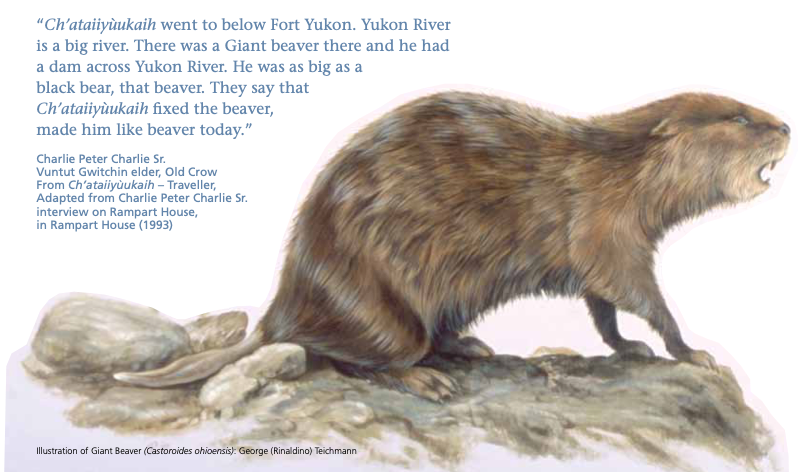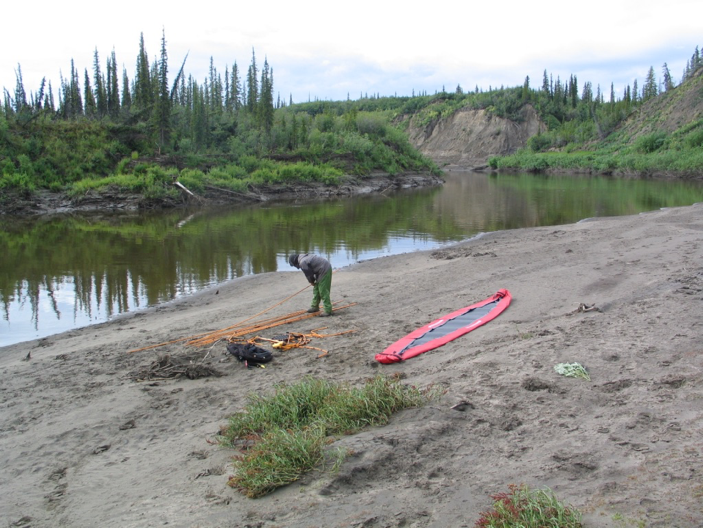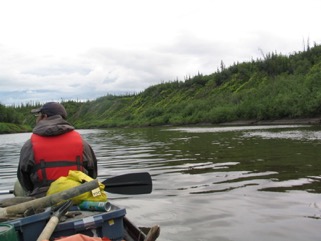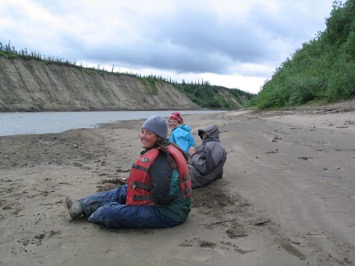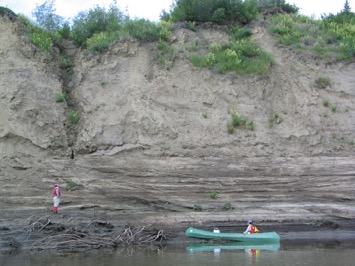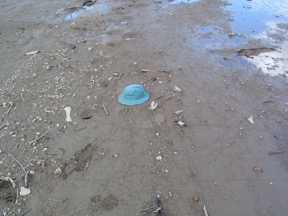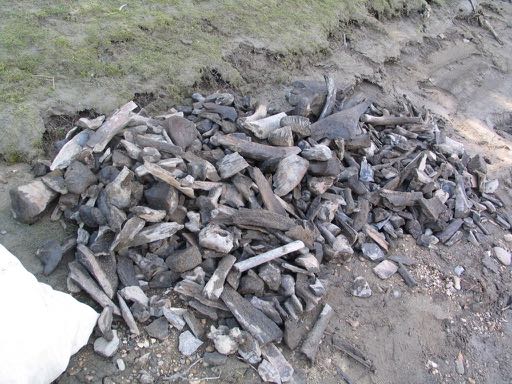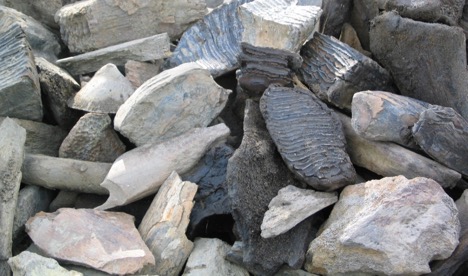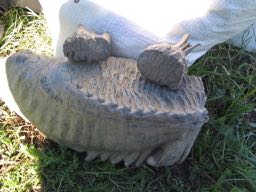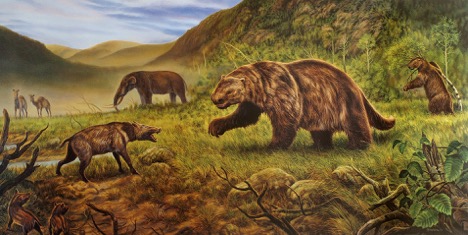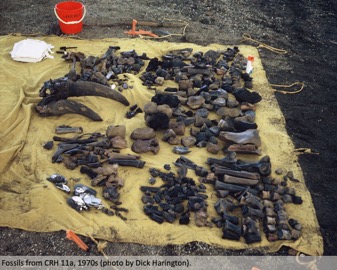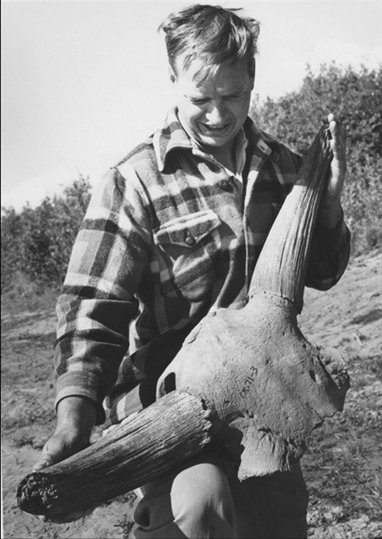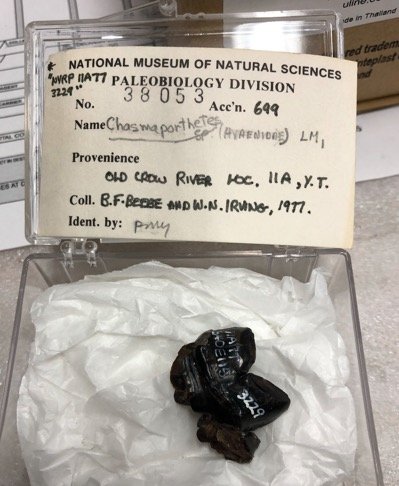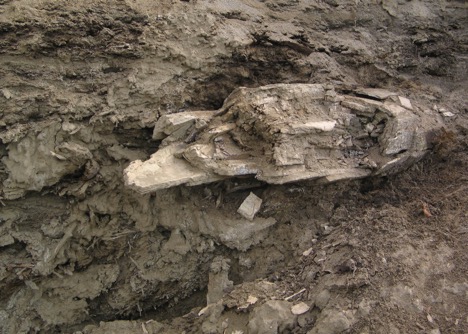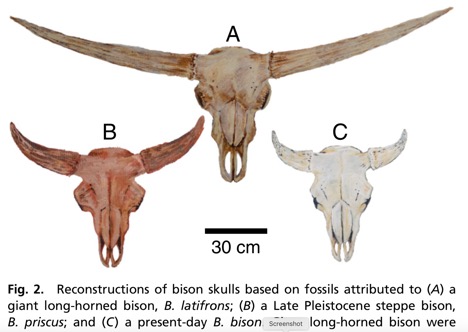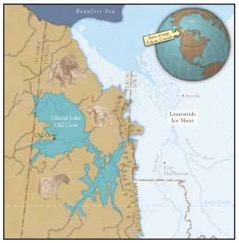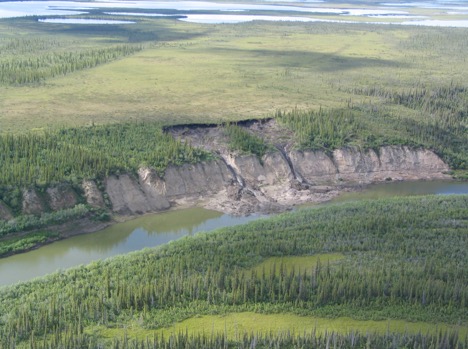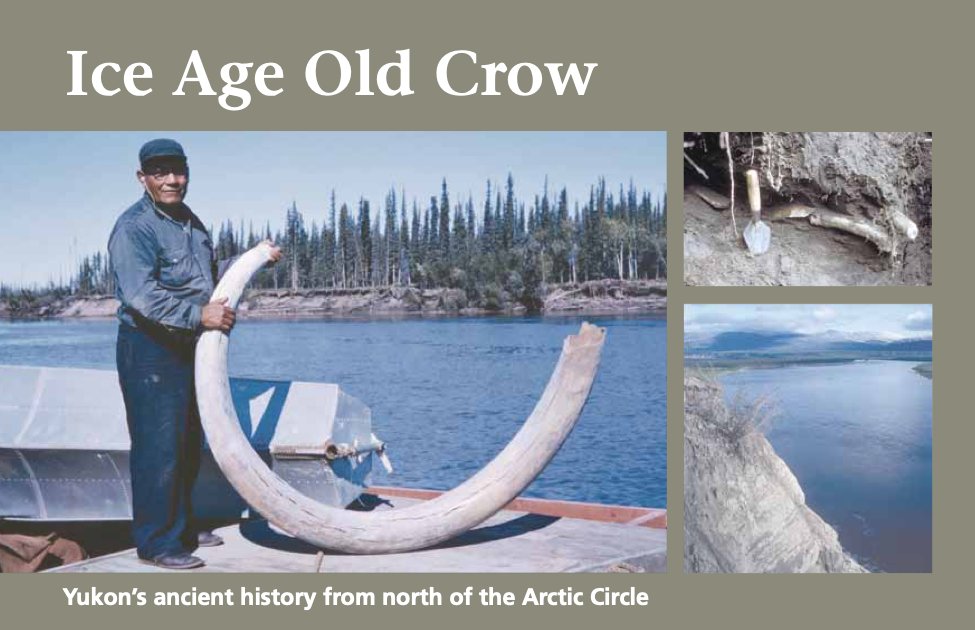On #fossilfriday I& #39;m thinking about fieldwork since we cancelled spring/summer work for 2020 due to Covid. This is the first in 25+ years to not work in N. Can. In 2006, I was newish @ualberta and wanted to understand the Ice Age history of the Old Crow area in N. Yukon 1/n
The Old Crow Flats is special scientifically because it existed within E. #Beringia, beyond the limit of glaciation, and connected with Siberia via the Bering Land Bridge. We were interested in permafrost, and especially paleo work as analogues for future warmer Arctic. 2/n
The Old Crow region has interglacial units going back 1 Ma , and one of the richest Pleistocene locales in NA, including what could be the earliest New World mammoths (pot. M. meridionalis or M. trogontherii). But chronology and details were sparse from the 1960s-1980s. 3/n
The Old Crow River (OCR) is within the Settlement Area of the Vuntut Gwitchin First Nation, and they’ve been tremendous partners in work there with us, and other researchers, including Otto Geist’s trip in the early 1950s to collect Ice Age fossils. 4/n
As well, the Vuntut Gwitchin have a long history of interpreting the fossils, including Giant Beaver and mammoths. VG found fossils and knew they came from buried contexts and so frequently stories involve animals living underground in the past. below from Ice Age Old Crow)5/n
I’d been in the area before, but always rushed by helicopter and unsatisfying. This time we flew pak-canoes to float the river over 3 weeks, collect fossils and sample Quat. exposures. Slow science with time to think and collect. We would go in July when water was low 6/n
My previous boat work had been on big rivers (Yukon, Mackenzie) or mtn rivers that were pretty fast. The Old Crow River is a highly sinuous meandering river—not fast—in fact as we found a decent wind would push canoes upstream. It was a rainy, buggy trip, but the fossils 7/n
I was joined by Grant Zazula, who was at the end of his PhD (now Yukon Palaeontologist), Kristen Kennedy (MSc student, now Yukon Geological Survey) and Elizabeth Hall (MSc student, now Yukon Palaeontology). They still remind me of the easy ‘float’ trip I promised. 8/n
We assembled the boats, packed gear/food for 3 weeks, and started our trip down the very slow OC River. We were there at low water because the detrital fossils are mostly exposed along river bars and below the exposures. 9/n
Interesting fact, because the OC River is sand-bedded, the coarsest material in the bars is in fact Pleistocene fossils. As a result, the heads of point bars, below fossiliferous sections, are littered with mammoth teeth, broken long bones, horse fossils. Remarkable. 10/n
One site, Petunia Pt (after Elizabeth), yielded ~1150 fossils. It took 4 of us ~3 hrs to collect and pile these up, including about 80 mammoth teeth. It’s prob. the most fossiliferous place I’ve worked, though the Klondike is similar but fossils come out more slowly. 11/n
Petunia point’s fossils are pretty typical of Old Crow collections, mostly mammoth (~50%), bison (11%), horse (25%) and then rarer taxa including Giant Beaver, beaver, hare, moose (broad fronted and modern), caribou, sheep, muskox and a few camels. 12/n
This makes the Old Crow fossils more similar to the N. Slope of Alaska sites than the interior of Yukon and Alaska that are dominated by bison (ca. 50-80% commonly) followed by horse and mammoth. 13/n
We can distinguish between interglacial taxa, which are rarer, and include sloths, caribou, moose, camels, Giant Beaver (C. ohioensis), beaver (C. canadensis), peccaries and mastodons. Below a reconstruction of an interglacial Old Crow flats. Image by (Rinaldino) 14/n
The most prolific fossil locale in OC area is a sharp bend in the river called CRH 11a, found just below the outcrop of MIS 7-Holocene CRH 11. Most of the fossils are derived from erosion at CRH 11 and deposit these fossils at this sharp bend, typ. 200-400 fossils each yr 15/n
So much of the work extends from C.R. Harington (CRH sites)-- Dick worked with VGFN members through 1960s and 1970s for the Cdn Mus.Nature and established alot of our understanding of the OC Pleistocene taxa.
CRH11a has yielded 1000s of fossils, incl. short-faced bears, lions, even hyenas. A collection of a hyena in the early 1970s and 1980s was recently re-discovered and included molars that documented the dispersal of hyenas into North America 16/n
In situ fossils are typ. from the base of exposures (MIS 7 tusk below) within meandering fluvial deps, associated with organics and interglacials. We wrote a few papers on these, including a late Irvingtonian fauna (ca. 190 ka fauna with an absence of bison) 17/n
From the latest Irvingtonian faunas we documented the earliest NA bison when the first steppe bison (B. priscus) came to NA, which included ancient DNA evidence (with @bonesandbugs) showing their passage to continental NA, where they quickly became B. latifrons in the US. 18/n
Toward the end of the Old Crow geo story, is glacial lake Old Crow that formed by the Laurentide IS during the L. Pleistocene. This lake reversed an easterly flowing River and flooded the Old Crow basin, eventually draining into Alaska about 14,000 years ago. 19/n
Kristen Kennedy’s MSc. Focused on the Laurentide Ice Sheet flooding of the basin. Existing permafrost was thawed under lake Old Crow, but following drainage permafrost developed. Thaw slumps along the Old Crow River are developed in these sediments and organic soils.20/n
These stories, and more, are included in our short popular booklet Ice Age Old Crow that Grant Zazula (Yukon Palaeontologist) and I put together a few years ago. None of this though without the cooperation and assistance of the Vuntut Gwitchin --end
http://emrlibrary.gov.yk.ca/Tourism/archaeology%20and%20palaeontology%20booklets/ice-age-old-crow-2013.pdf">https://emrlibrary.gov.yk.ca/Tourism/a...
http://emrlibrary.gov.yk.ca/Tourism/archaeology%20and%20palaeontology%20booklets/ice-age-old-crow-2013.pdf">https://emrlibrary.gov.yk.ca/Tourism/a...
Thanks. And hope you enjoyed the trip and it took you away from isolation for just a bit. It was fun putting it together and remembering so many good summers of work in the OC region. —Peace and wash your hands.

 Read on Twitter
Read on Twitter